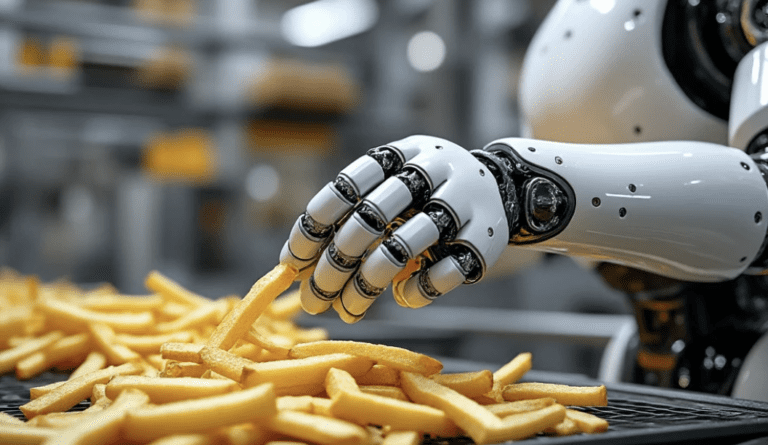 With rapid technological progress and a renewed emphasis on health and safety in the wake of COVID-19, more and more Chinese hotels are relying on robotics to facilitate customer service provision. Yet we still know little about how such service robots influence customers’ brand experience – a critical determinant of hotels’ growth and profitability in today’s highly competitive market.
With rapid technological progress and a renewed emphasis on health and safety in the wake of COVID-19, more and more Chinese hotels are relying on robotics to facilitate customer service provision. Yet we still know little about how such service robots influence customers’ brand experience – a critical determinant of hotels’ growth and profitability in today’s highly competitive market.
Rising to this challenge, Dr Vincent Tung of the School of Hotel and Tourism Management (SHTM) at The Hong Kong Polytechnic University and a co-researcher bridge the gap between tourism and humanities research to explore customers’ narratives of hotel robotics with respect to different dimensions of brand experience. Their novel literacy-based framework – focusing on “microstories” on social media – offers important insights for hotel marketers seeking to enhance customers’ brand experience in the era of robotics technology.
What makes one hotel, destination or hospitality service provider stand out from the rest? The answer may lie in brand experience: how customers perceive and interact with a brand at every stage of the customer journey. “Brand experience represents customers’ perceptions during moments of contact with a brand”, the researchers tell us. “It is crucial for differentiating a brand from others, and for maintaining long-term relationships with customers”. In today’s extremely competitive hospitality landscape, cultivating a positive brand experience is a powerful strategy for business growth and profitability.
Brand experience has four key dimensions: sensory, affective, cognitive and behavioural. Sensory experiences involve smell, sight, touch, taste, and hearing. Cognitive experiences stimulate customers’ curiosity and problem-solving. “Behavioural experiences involve the body as a whole”, say the researchers, “such as customers’ physical actions during an experience”. Finally, affective experiences reflect customers’ emotional connections with brands and influence the quality of the relationships they build with organisations.
Given the importance of brand experience, researchers have begun examining its connection with another major trend in the world of hospitality and tourism, especially in the wake of the pandemic: hotel service robotics. “Customers’ evaluations of the four dimensions of brand experiences could be affected by their engagement with robotics”, say the researchers. For example, learning how to interact with robots in a hotel could enhance customers’ cognitive experience of the hotel brand. Meanwhile, “the nature of robotics may require customers to be more physically involved, particularly during service encounters”, improving their behavioural experience of the brand.
However, a vital piece of the puzzle is still missing. To date, studies have either treated brand experience as a single measure, without conceptualising its four distinct dimensions, or assessed these dimensions as independent constructs, without considering how they are connected.
“This is a crucial conceptual gap”, the authors warn. “The connections between the four dimensions need to be considered together, since they form a customer’s overall evaluation of brand experience”. For example, a customer who is asked to recall their interaction with a hotel service robot may focus on the robot’s actions (behavioural experience) or appearance (sensory experience) before discussing how they felt about the interaction (affective experience).
Furthermore, most previous studies have used quantitative methods to assess the link between brand experience and robotics, failing to provide a qualitative assessment. “While quantitative studies measure the extent to which customers rate their experiences”, say the researchers, “they do not provide deeper insights into how customers share their brand experiences, such as the words they use and narratives that they write.” This is an important omission, because customers’ narratives on online and other platforms can serve as crucial word-of-mouth marketing for brands.
To overcome these limitations, the researchers qualitatively examined the patterns of influence of hotel service robotics on different dimensions of brand experience. To answer this question, they turned to another field entirely: the humanities. The concept of microstories – defined as “narratives that seek to condense a big, rich and complex story into the fewest words possible” – allowed them to connect tourism and humanities research to understand how customers share their brand experiences.
To collect such microstories, the researchers focused on Xiaohongshu, an emerging social media platform in China. “The narratives of hotel brand experiences with robotics in Xiaohongshu are oftentimes long and detailed”, say the researchers. “Narratives are written in an approachable and relatable way and could even be in the form of descriptive ‘diaries’ about personal experiences”.
Thirty-one such narratives were collected from Xiaohongshu and thematic analysis was used to connect them to the four dimensions of brand experience. “This study sought to capture information from customers’ entries to gain insights into how well they thought the robots served their purposes”, report the researchers, “and how well the robots fit the brand experiences of the hotel”.
Although brief, the narratives allowed the users to elaborate and reflect on their experience of interacting with hotel robots. “They set a fun, entertaining and relatable tone before progressing into details of their hotel brand experiences”, say the researchers. They usually began by recalling what the robots had done (behavioural experience) and wondering what they could do (cognitive experience). Next, they described their affective (emotional) experiences of interacting with the robots, followed by what they saw (sensory experience) when the robots responded. Finally, the researchers note, “the customers often ended by providing an informative or humorous conclusion”.
Based on these findings, the researchers developed an innovative framework that sheds light on the patterns of influence of robotics on the four dimensions of customers’ brand experience. Their results show that behavioural and cognitive experiences can elicit affective experiences and, subsequently, sensory experiences. “Meanwhile”, the researchers add, “affective experiences act as an interface between the behavioural and cognitive dimensions”.
The analysis also offered insight into the salience associated with the different dimensions of brand experiences. “Not all brand experiences dimensions with robotics were emphasized equally by the customers”, report the authors. “They emphasized behavioural, affective, and sensory experiences more than cognitive experiences (problem-solving)”. This may be because hotel robots are designed to be easy to use and may thus require few problem-solving skills.
In addition, the study highlighted “how common it is for customers to use micro-stories to convey delightful and humorous narratives”. Although brand experiences can be positive or negative, micro-stories may increase the intensity of readers’ positive emotions and “tangibilise” brand experiences.
This framework has crucial marketing implications. First, “as customers did not reflect on all four brand experience dimensions in the same way”, the researchers say, “marketers need to be cognizant of the target market, where the deployment of robotics in hotels is growing rapidly”. Second, marketers could focus on the patterns offered by the framework to elicit more relatable and deeper customer narratives about their brand experiences. “For instance, marketers could take a step-by-step approach to let customers explore and reflect on what they would like to do when they engage with a robot”.
Third, the study shows that marketers should closely monitor micro-stories on social media, “as real experiences are perceived as more authentic from a reader’s perspectives than a firm’s promotional material”. Replying to users’ posts and interacting with customers online “could benefit hotels by establishing a positive image of responsiveness and service quality”.
This innovative study contributes important interdisciplinary insights to the tourism and marketing literature, filling important gaps in studies of brand experience. Forging a novel link between tourism and humanities research through the concept of micro-stories, the researchers offer a fresh and deeper understanding of customers’ brand experiences with robotics. “The framework presented in this study”, they say, “could provide marketers with insights into how customers are narrating their hotel brand experiences in a promising literacy format that is enjoyable, engaging, and immersive”.
Tung, Vincent Wing Sun, and Tse, Serene Wai Tsz (2023). A Patterns Perspective of Customers’ Brand Experiences with Robotics in Hospitality. Journal of Travel & Tourism Marketing, Vol. 40, Issue 1, 75-89.




















